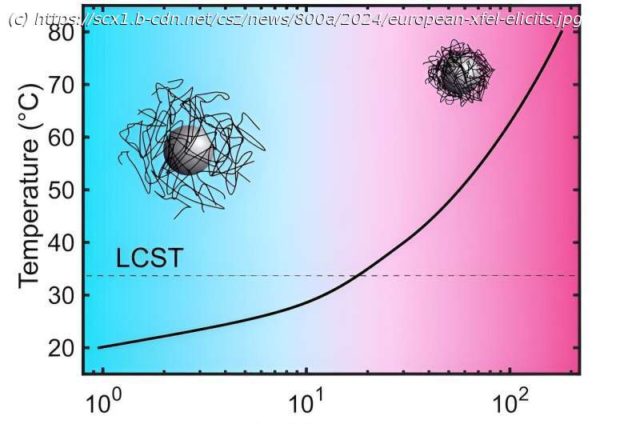An international team at the world’s largest X-ray laser European XFEL at Schenefeld near Hamburg has scrutinized the properties of an important nanogel that is often used in medicine to release drugs in a targeted and controlled manner at the desired location in a patient’s body. The team has now published the results in the journal Science Advances.
An international team at the world’s largest X-ray laser European XFEL at Schenefeld near Hamburg has scrutinized the properties of an important nanogel that is often used in medicine to release drugs in a targeted and controlled manner at the desired location in a patient’s body. The team has now published the results in the journal Science Advances.
The researchers investigated the temperature-induced swelling and collapsing of the polymer poly-N-isopropylacrylamide (PNIPAm) at European XFEL at Schenefeld near Hamburg. Due to its dynamic changes, PNIPAm is frequently used in medicine, e.g. for drug delivery, tissue engineering or sensorics.
PNIPAm is typically dissolved in water. Above a certain temperature, the so-called lower critical solution temperature (LCST), which is around 32 °C, it changes from a hydrophilic, water-loving state to a hydrophobic, water-repellent state.






